McLaren 570 GT Review: The 'Comfier, Softer' Supercar From England
If you had $200,000 to burn and wanted a car that would tear your face off, traditionally you’d call up your local Ferrari or Lamborghini dealer. But if you also wanted that fast car to handle road trips and luggage, you’d stop at the local Maserati or Aston Martin dealer. Either way, you picked out a color, the salesman laughed a little too heartily at your bad jokes, and you went home happy.
But there’s another exotic option, and it’s one more rich consumers are making every year: McLaren. In the past five years, British manufacturer McLaren, settled in the small town of Woking, has gone from nascent road car company to global sales contender. After only a half decade in the road-car business, McLaren is selling more units per year than Lamborghini, which has sold road cars since 1963.
McLaren’s background is in racing, supplying cars for famous Formula One legends like Ayrton Senna and Mika Hakkinen. At their core McLaren’s road cars are made to fight the likes of the Lamborghini Huracan and LaFerrari, but now the company is trying its hand at a more comfortable, friendly experience: the 570GT.
The 570GT is based on the 570S, a no-nonsense supercar. And as a supercar, it gets an A for its road capabilities.
But the tricky thing is, McLaren says the GT is softer. Easier to live with. Something you’d want to take for a weekend away in the Pocono Mountains with your significant other. But what McLaren has actually done is take a mid-engined supercar meant to smash lap times and try to pass it off as an Aston Martin — which is an okay idea if it works. It doesn’t.
That’s not to say the 570GT isn’t a good car; it’s a very good car.
Exterior
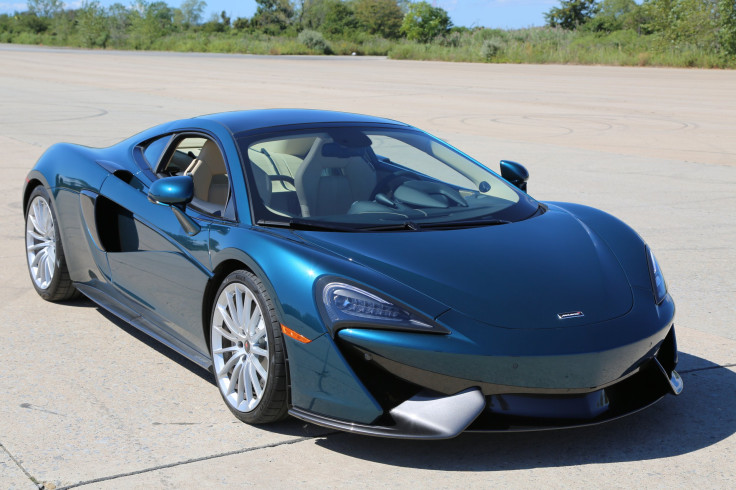
The 570GT is similar to the 570S, so it’s about as fantastic to look at. In ways it’s actually better — the panoramic moonroof that’s exclusive to the GT is one of the most beautiful pieces of design on the market today. But otherwise the exterior differences are subtle: a different set of wheels and the Pacific Blue paint on our test car aside, this is pretty much the same look as the 570S, which means you’ll likely be featured in a lot of Instagram photos while on grocery runs.
The way the rear of the car comes together is especially beautiful. At the triangular extremities of the rear end, McLaren has found a clever way to integrate the exhaust pipes into the corners of the valence. It’s a pretty design to behold — which is a good thing since most other motorists will only ever get to see the back of this car. Yet despite all the clever engineering and mathematical equations creating such a complex shape, the 570GT doesn’t feel overstyled or overcomplicated.
Its party piece is the aforementioned panoramic moonroof. If there’s anything about the 570GT that will make you love life, it’s driving along during an autumn night while your passenger looks up and stargazes through your roof.
Interior
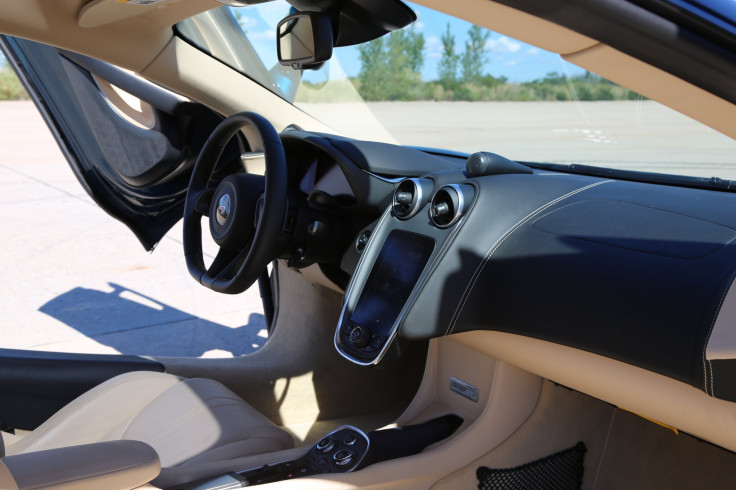
The inside of the 570GT feels like a top-floor penthouse where the view is amazing and you have all the light you ever could want, but the sofa is terrible. It’s one of those bizarre pieces of furniture you’re supposed to buy to “bring the room together” and not actually sit on. Such is the case with the seats of this car.
I’m not sure from where exactly McLaren sourced the materials, but at a guess, it’s their closest rock quarry. And if it isn’t, well, the seats in the 570GT certainly feel like rock formations. They hammered away at not only my back, but the back of every passenger I had to confirm my assessment. It’s likely the thinness of the seat frame and lack of side bolstering put a damper on things, but the “why” isn’t that important. The fact is, these are not seats suitable for a grand tourer. If this was the kind of car you’re meant to drive for 20 minutes on special occasions, I’d overlook this.
But again, McLaren says this is softer and better for long journeys. I’m 27 and my lower back couldn’t take more than an hour or two at a time in the 570GT so the prospect of a cross-country road trip in this is not enticing.
The sound system is nice at least though it’s tied to McLaren’s IRIS infotainment system. Which looks lovely, but is frustratingly slow, and the navigation is just nonsensical. You’ll get used to it. But what you don't get used to is the problem the infotainment screen has: Thanks to that all-glass roof, driving in the daytime means light floods the cabin and makes the contents of the screen unreadable. What use is a screen you can’t see all the time?
Thankfully the dash display, home to all the crucial gauges (fuel, speed, etc.) doesn’t suffer from the same issue. In fact, it’s probably the best part of the 570’s interior. The screen can be toggled among three modes, corresponding to the drive modes on the center console: normal (which is as the name implies), sport (which colors the rev range a darker shade of orange and encourages the engine to rev a bit higher before shifting) and track (for pretending you’re Fernando Alonso). The Formula One-style tachometer, complete with shift lights, is aesthetically simple but its simplicity is pure beauty. Plus, it makes you feel like a racing driver, and that’s okay in my book.
Performance
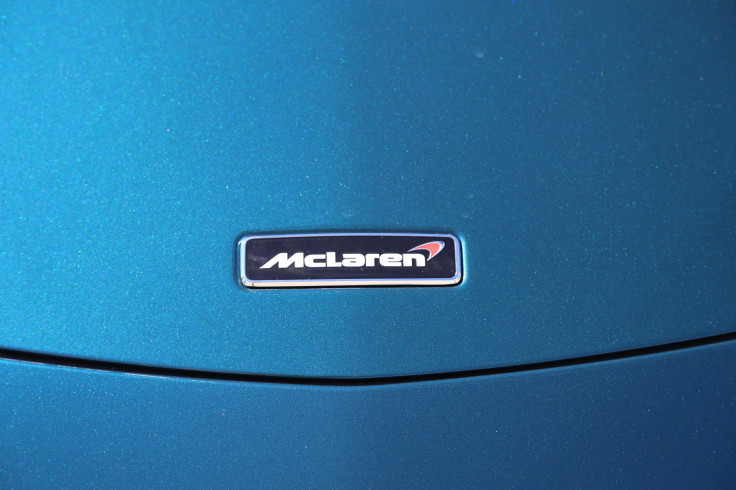
Most of the 570GT’s abilities are wasted on the streets, but when you drive the car with even a hint of enthusiasm, you’ll feel its brilliance. I'll get to the power in a bit -- first we have to talk about steering. McLaren uses a conventional hydraulic system, so the 570 actually feels connected to the road. Considering the rise of electric steer-by-suggestion even in supercars, this old-school choice will do a purist’s heart good. The 570GT gets a slightly less responsive steering rack than the standard 570S, but you’re not likely to notice much of that in daily driving.
The shame of this car and anything remotely like it, is you’ll be hard-pressed to even sniff its limits on public roads. It will navigate any proper road you can throw at it in its sleep, so by the time you get the car to really play along, you’ll be going way faster than any rational police officer would let you get away with — even if you let him take a photo of himself in the driver’s seat.
But when drivers do inevitably push too hard, they shouldn’t have too much trouble catching their mistakes: The 570GT is set up to understeer slightly, and understeer is much easier to understand and react to than oversteer. Not to mention all of the computer wizardry on board to help you — McLaren has excellent traction and stability control systems. You’re not going upset the car without a fight, and even if you do, there’s a safety net.
Now, the engine: It’s the same twin-turbo 3.8-liter V8 McLaren uses in the more expensive 650S, but it’s been detuned to 562 horsepower and 443 torque (down from 641 horsepower and 500 torque), but even the heavier and “comfier” 570GT only weighs 3,000 pounds. So you’re basically riding a Sidewinder missile.
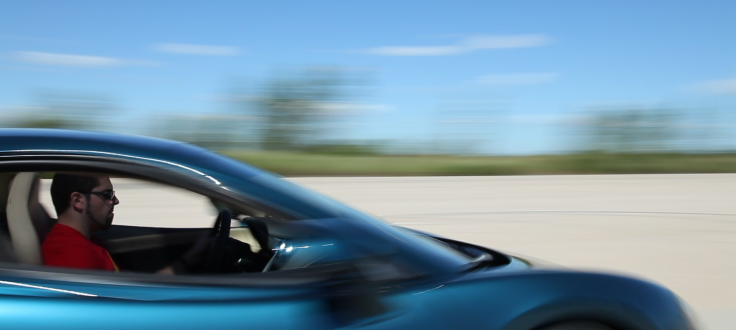
Once the turbos spool, you become a rider of the horsepower apocalypse. Most modern turbo motors try their best to mimic the responsiveness and power delivery of naturally aspirated motors, but the 570 is a bit of a throwback. The 570's power curve is reminiscent of the turbocharged setups of the early 2000s: There’s no power down low, still no power for a little bit afterward, and then all of a sudden the turbos come through the vents and pin your neck to your seat. This is probably to keep the car docile in urban areas so you don’t accidentally triple the speed limit, but I choose to believe it was done to put a stupid grin on your face when traffic fades and you drive like you’re late to the altar.
The sound could be a little more pleasant, though. The optional “sports exhaust” would remedy that (though that’s sort of a joke on a supercar isn’t it?), but that’s one of those options the intended customer would skip. As it stands, the 570GT sounds like a Dyson vacuum when it’s off boost.
The 570GT is quite good, but not as good as it could be. To keep the car at the same sub-$200,000 starting price as the 570S, McLaren swapped the original carbon ceramic brakes for more conventional iron rotors. It’s not that the brakes don’t work, but why would you want your supercar not to perform at peak? The changes to the GT still haven’t produced a grand tourer. The 570 is not Howlin’ Wolf — it was built for speed. What the 570GT has become is a less-capable supercar with a pretty roof.
Conclusion
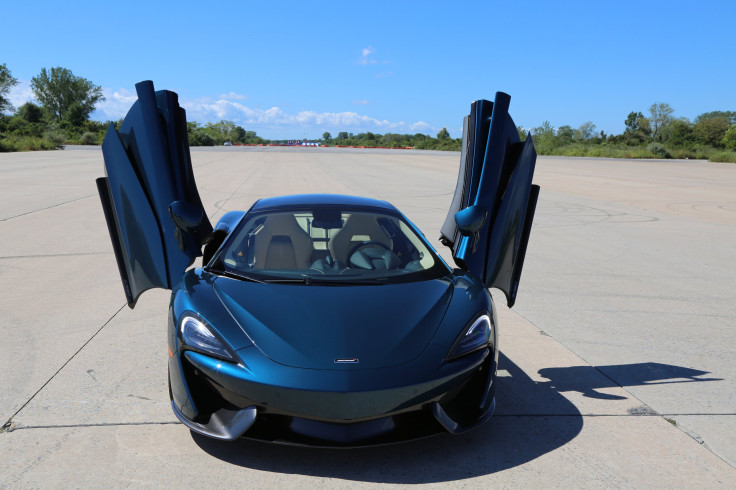
Despite the speed, I didn’t like the 570GT very much. I didn’t like what McLaren was trying to make it out to be. I understand what they were going for — a more comfortable, more livable supercar — but after a week with it, I don’t think it works. I found myself wishing it was just the 570S.
Although I understand McLaren’s desire to diversify its customer base, I just don’t see a logical argument for buying this over a 570S. And if you really need that open sky aesthetic, McLaren’s launching a 570S Spider in 2017. Which is what I'd have instead.
© Copyright IBTimes 2024. All rights reserved.






















